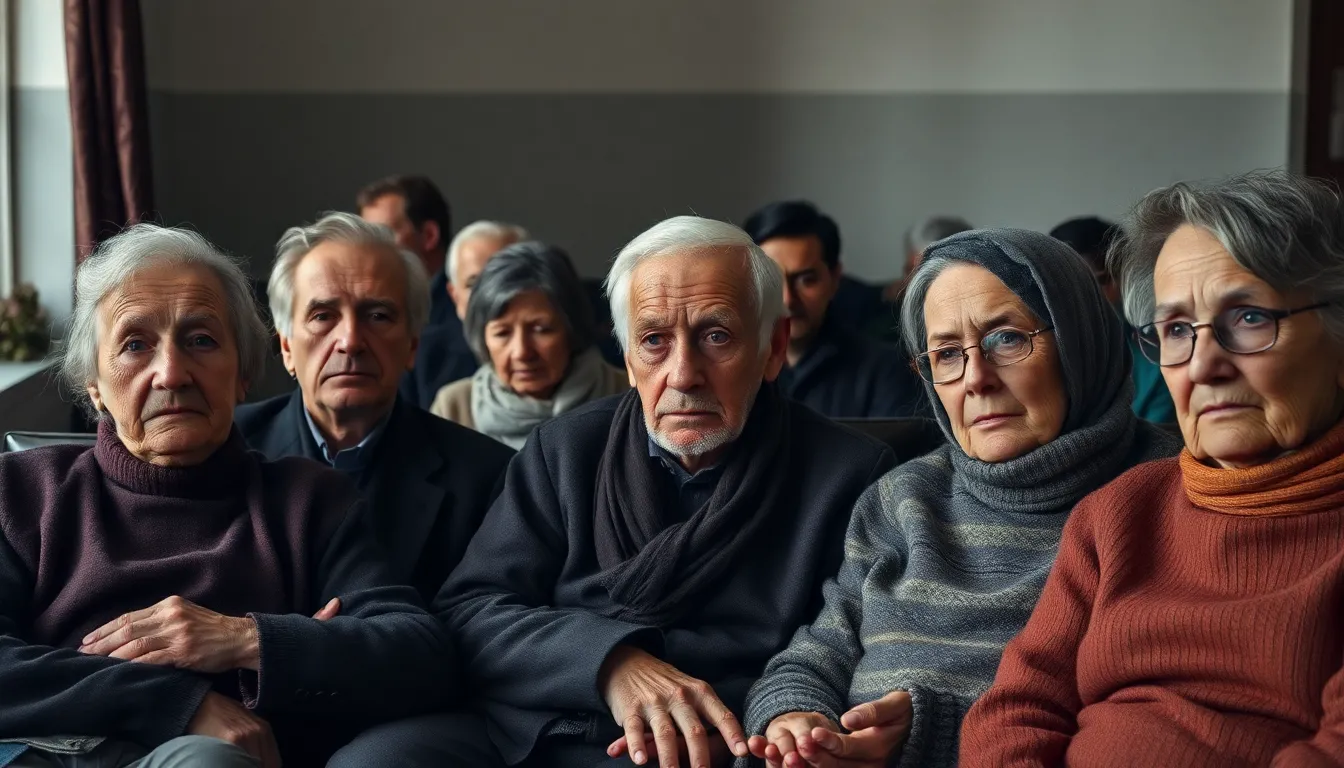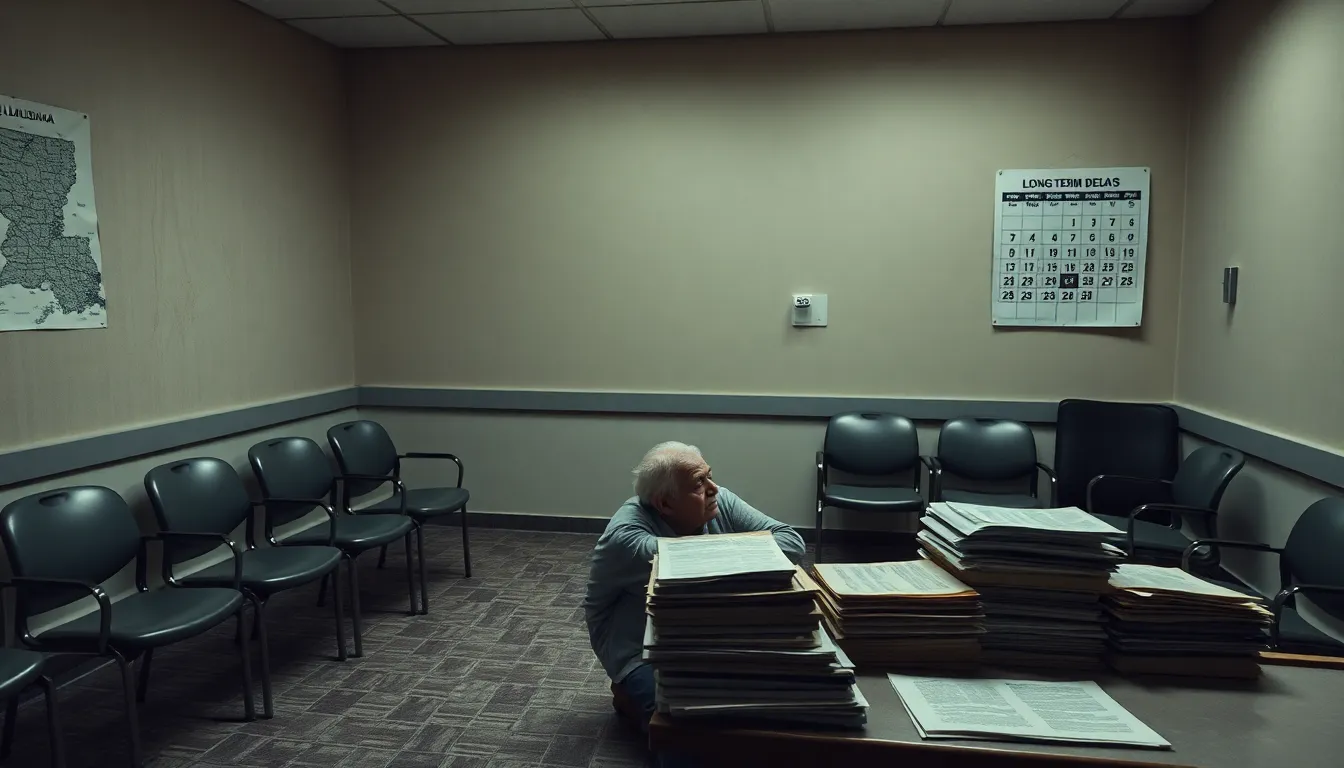A recent report reveals alarming failures in senior healthcare, indicating that Medicare performs worst in Louisiana, Mississippi, report shows. This critical underperformance contributes to higher costs, compromised care quality, and a stark two-year reduction in life expectancy for individuals at age 65.
Life Expectancy and Health Quality:
Medicare’s underperformance directly contributes to a two-year shorter life expectancy at age 65 in Mississippi, alongside higher rates of chronic conditions, inappropriate treatments, and avoidable hospitalizations for over 1.6 million beneficiaries in both states.
Financial Strain and Access Limitations:
Beneficiaries face significant financial burdens with high Medicare costs not translating to quality care, leading to affordability issues that prevent access to essential services like dental health for over a third of seniors, compounded by systemic barriers to accessing medical care.
Policy and Structural Deficiencies:
The reliance on private providers introduces inconsistent care delivery, while recent Medicaid cuts and legislative delays until 2034 on Medicare Savings Program reforms exacerbate access challenges and financial strain, particularly for dually enrolled and low-income beneficiaries.

Bottom Ranking Leads to Two-Year Life Expectancy Deficit
A recent report reveals a critical issue concerning healthcare for seniors in two Southern states. Specifically, Medicare performs worst in Louisiana, Mississippi, report shows, consistently placing them at the bottom nationally in service delivery. This poor performance is not merely a statistical anomaly; it directly contributes to significantly higher costs for beneficiaries, compromises the quality of care received, and results in a stark two-year reduction in life expectancy for individuals at age 65 compared to the national average. This troubling trend highlights a systemic challenge impacting the health and financial well-being of a vulnerable population.
The implications of such a ranking extend beyond abstract metrics, affecting daily lives and long-term health prospects. For many seniors, the promise of comprehensive healthcare through Medicare is undermined by persistent challenges in these regions. Understanding the breadth and depth of this issue is crucial for beneficiaries, policymakers, and healthcare providers alike.
The Broad Scope of Underperformance
An October 2025 report by the esteemed Commonwealth Fund unequivocally states that Louisiana and Mississippi rank last nationally in serving Medicare recipients. This comprehensive assessment did not rely on a single metric. Instead, the study utilized 31 distinct metrics to evaluate each state’s care system, painting a detailed picture of the challenges faced. Across these indicators, a consistent pattern emerged: lower quality of care and greater difficulty accessing and affording essential medical services compared to other states.
This wide-ranging poor performance means that whether beneficiaries are seeking preventive care, managing chronic conditions, or responding to an acute health crisis, they are likely to encounter obstacles. The difficulty in accessing care can manifest as long wait times for appointments, a scarcity of specialists, or geographical barriers to facilities. Affordability issues are compounded by high out-of-pocket expenses, even for those with Medicare coverage, leading some to delay or forego necessary treatment. These systemic failures collectively underscore why the report concludes that Medicare performs worst in Louisiana, Mississippi, report shows, impacting numerous facets of elder care.
High Costs, Low Value: A Troubling Disconnect
One of the most concerning findings from the Commonwealth Fund report is the striking disconnect between the cost of Medicare services and the health outcomes for patients in Louisiana and Mississippi. Medicare costs in both states are ranked among the highest in the nation. This financial burden on the system and individual beneficiaries is not translating into superior, or even adequate, health services. Instead, residents are paying more while simultaneously receiving lower quality care and struggling to access it.
Beneficiaries in these states find themselves in a challenging position, often paying higher premiums or facing greater deductibles and co-pays, only to navigate a healthcare landscape fraught with deficiencies. This economic inefficiency implies that resources are either mismanaged, or the existing infrastructure is simply insufficient to deliver effective, cost-efficient care. The inability to translate substantial investment into improved health outcomes for seniors represents a significant failure of the healthcare system in these regions. Addressing this paradox requires a multi-faceted approach, potentially including reforms aimed at ensuring better value for every dollar spent on Medicare services, and exploring ways to improve strategies for keeping people insured and reducing unnecessary expenditures.
Quantifiable Impact: A Shorter Life at 65
Perhaps the most devastating finding directly links poor Medicare performance to a tangible reduction in human life. The report highlights that Mississippi’s life expectancy at age 65 is two years shorter than the national average. This is not a trivial difference; two years in later life can represent significant time for family, personal pursuits, and overall quality of life. The consistent underperformance of Medicare in the state, characterized by lower quality and access issues, directly contributes to this alarming longevity deficit.
This specific, quantifiable impact underscores the gravity of the healthcare challenges in Mississippi. When seniors cannot easily access necessary preventative screenings, timely treatment for acute conditions, or effective management of chronic diseases, their overall health trajectory is negatively affected. Over time, these cumulative disadvantages can significantly shorten life spans, making the report’s conclusion that Medicare performs worst in Louisiana, Mississippi, report shows, a matter of life and death. Proactive measures, such as enhanced community health initiatives or collaborative senior wellness fairs, become even more vital in these environments to mitigate these profound consequences.
The two-year gap in life expectancy serves as a powerful indicator of the urgent need for comprehensive reforms. It compels a deeper examination of how healthcare systems can be strengthened to ensure equitable access, improved quality, and ultimately, better health outcomes for all Medicare beneficiaries, irrespective of their geographic location.

Widespread Care Deficiencies Impact Over 1.6 Million Beneficiaries
A recent and concerning report indicates that Medicare performs worst in Louisiana, Mississippi, report shows significant systemic failures. More than 1.6 million Medicare beneficiaries in these two states confront severe challenges. They struggle with basic care access and overall affordability. This critical situation is further exacerbated by several factors. A high prevalence of chronic conditions among the elderly population is a key issue. Additionally, inappropriate medical treatments and elevated rates of avoidable hospitalizations contribute to these poor outcomes. These findings underscore an urgent need for comprehensive healthcare reform.
A Deep Dive into Beneficiary Demographics and Health Status
The demographic scope of Medicare enrollment in Louisiana and Mississippi is truly substantial. Approximately 960,000 Louisianans and 650,000 Mississippians are currently enrolled in Medicare. This totals over 1.6 million individuals depending on this vital program. This represents more than 20% of each state’s entire population. Such a large beneficiary base makes the quality of care provided especially critical. A significant challenge is the pre-existing health status of many beneficiaries upon enrollment. Over two out of three Medicare recipients in both Mississippi and Louisiana suffer from three or more chronic health conditions. Common examples include debilitating issues like diabetes and high blood pressure. Managing these complex health profiles effectively demands robust and accessible healthcare infrastructure. The current deficiencies severely hinder this.
The burden of multiple chronic conditions places immense demands on healthcare systems. Beneficiaries with conditions such as heart disease, arthritis, and chronic respiratory issues often require ongoing specialist care. They also need frequent monitoring and a consistent medication regimen. When care access is limited or affordability is a barrier, these conditions often go unmanaged. This can lead to severe health deteriorations and a reduced quality of life. The data clearly suggests that the existing support structures are insufficient to meet these extensive needs. This creates a cycle of worsening health outcomes for vulnerable seniors.
Compromised Care Quality and Inappropriate Treatments
Beyond chronic disease management, specific examples highlight compromised care quality. Older Medicare recipients in Louisiana and Mississippi receive prescriptions for medications often deemed inappropriate for the elderly. This occurs at significantly higher rates than in other U.S. states. These include drugs that can cause severe side effects in older adults. Risks such as confusion, increased fall rates, and internal bleeding are greatly elevated. This points to a critical gap in geriatric pharmacology training or oversight. Ensuring safer prescribing practices is paramount to patient well-being.
The challenges extend into acute care settings. Nursing home residents hospitalized in Louisiana and Mississippi face a higher frequency of readmissions. This indicates a potential failing in discharge planning processes. It also suggests inadequate transitional care support upon returning to the nursing facility. Effective coordination between hospitals and nursing homes is vital. This helps prevent early readmissions and ensures continuous, appropriate care. Poor coordination can lead to a revolving door effect for these vulnerable patients.
Moreover, avoidable emergency room visits are considerably more common among Medicare beneficiaries in these states. These visits often stem from conditions that could have been managed effectively in a primary care setting. This pattern suggests inadequate access to primary care physicians or specialists. It also indicates a lack of timely preventative interventions. Reducing these avoidable ER visits would alleviate strain on emergency services. It would also lead to better health outcomes and lower costs for beneficiaries. Strengthening the continuum of care is essential for addressing these issues comprehensively.
Significant Financial Barriers to Essential Care
Financial obstacles represent a formidable barrier to essential healthcare services in Louisiana and Mississippi. This is particularly stark in the realm of dental health. An alarming statistic reveals that over a third of Mississippians and Louisianans aged 65 and older did not have a dental visit. This occurred in the past year, primarily due to issues with affordability or access. Dental health is inextricably linked to overall systemic health. Neglecting oral care can exacerbate chronic conditions such as heart disease and diabetes. It can also lead to severe infections and nutritional deficiencies.
The inability to afford basic preventative dental care is not an isolated problem. It reflects broader systemic issues concerning healthcare affordability and access for seniors. When individuals must choose between essential services like dental check-ups and other necessities, health often suffers. This means preventative services are often deferred, leading to more complex and costly treatments down the line. Such financial strain highlights the critical vulnerabilities within the current Medicare system in these regions. Community initiatives like senior wellness fairs can help raise awareness. However, fundamental changes are needed to ensure true financial accessibility to care.
These persistent financial and access challenges contribute directly to the overall poor performance. The report clearly shows that Medicare performs worst in Louisiana, Mississippi, report shows these states lagging behind nationally. The cumulative effect of high chronic disease prevalence, compromised care quality, and financial barriers creates a dire situation. Policymakers and healthcare providers must address these multifaceted issues. Their efforts are crucial to improve the health and well-being of over 1.6 million vulnerable seniors. Ensuring equitable and comprehensive care must be a top priority.

Policy Delays & Cuts Worsen Care Access Until 2034
A recent report indicates that Medicare performs worst in Louisiana, Mississippi, report shows. This alarming finding underscores systemic issues within the healthcare landscape, particularly for vulnerable populations. While federal Medicare benefits are designed to be uniform nationwide, their delivery relies heavily on private providers. This reliance creates significant variations in service provision, directly contributing to disparities in care effectiveness across different states.
The challenges faced by beneficiaries in states like Louisiana and Mississippi are not isolated incidents. They reflect deeper structural problems within Medicare itself, compounded by recent state-level policy changes affecting Medicaid. These intersecting factors exacerbate persistent difficulties in accessing effective care, especially for low-income individuals and those dually enrolled in both Medicare and Medicaid. Moreover, certain policy delays, now extending until 2034, cast a long shadow over future improvements for these critical support programs.
The Foundation of Disparity: Private Providers and Program Structure
Medicare’s foundational structure, which delegates a substantial portion of care delivery to private providers, inherently introduces a degree of variability. Although federal benefits are stipulated to be consistent, the actual experience of receiving care can differ dramatically from one state to another. This is because private healthcare systems operate under diverse local conditions, market dynamics, and resource availability, leading to inconsistencies in service quality and access. For example, the availability of specialized services or preventive care initiatives can vary widely, even for the same federal benefits package.
Such inherent variations in private medical care delivery are a significant contributing factor to disparities observed in national healthcare reports. When a report indicates that Medicare performs worst in Louisiana, Mississippi, report shows, it highlights how these structural elements disproportionately impact regions already struggling with healthcare infrastructure and socio-economic challenges. The decentralized nature of care provision, while offering choice, can inadvertently create pockets of underserved populations where the promise of uniform federal benefits falls short in practice. This complexity necessitates a closer examination of how program design influences real-world health outcomes for millions of beneficiaries.
The reliance on a fragmented network of private providers means that local capacity and operational efficiencies dictate the ease with which beneficiaries can navigate the healthcare system. In areas with fewer providers or less integrated systems, accessing appointments, receiving timely diagnoses, or coordinating complex care can become formidable obstacles. This is particularly true for older adults or individuals with chronic conditions who require ongoing, coordinated medical attention. The system’s structure, therefore, is not merely an administrative detail; it profoundly shapes the quality and accessibility of care, especially in states where healthcare resources are already strained.
Medicaid Cuts: A Direct Hit to Dual Eligibles
A particularly vulnerable group affected by these systemic issues are dually enrolled beneficiaries. These are individuals who qualify for both Medicare, typically based on age or disability, and Medicaid, due to low income. Medicaid plays a crucial role for these individuals, covering services not traditionally provided by Medicare, such as dental care, vision services, hearing aids, and essential home and community-based services (HCBS) like personal care assistance. These supplementary benefits are vital for maintaining health, independence, and overall quality of life.
However, recent legislative changes threaten this critical safety net. Medicaid spending cuts, enacted through “this summer’s” legislation—specifically, the One Big Beautiful Bill Act in 2025—are poised to significantly impact these vulnerable populations. These cuts could result in reduced coverage for or complete elimination of many non-Medicare covered services, creating substantial gaps in care. Without Medicaid’s supplementary support, dually enrolled beneficiaries, often managing multiple chronic conditions, will find it increasingly difficult to access necessary dental care, crucial for overall health, or the home-based support that prevents institutionalization.
The consequences of these cuts extend beyond immediate access to services. They can lead to a deterioration in health outcomes, increased emergency room visits for preventable conditions, and a greater burden on families or caregivers. For someone who relies on home and community-based services to live independently, a reduction in these provisions could force them into more expensive and less desirable institutional care settings. This legislative shift directly undermines the comprehensive support framework that dually enrolled beneficiaries depend on, illustrating how policy decisions can have far-reaching and detrimental effects on the most vulnerable members of society. Understanding the implications of such cuts is crucial for those who advocate for effective healthcare policy and insurance access.
The Long Shadow of Policy Delays: Medicare Savings Programs
Further exacerbating access challenges are the long-term implications of delayed policy changes impacting Medicare Savings Programs (MSPs). MSPs are state-run initiatives that help low-income Medicare beneficiaries pay for their Medicare premiums, deductibles, and co-payments. These programs are essential in ensuring that seniors and individuals with disabilities can afford their healthcare costs, thereby enabling better access to necessary medical care without facing prohibitive financial barriers.
Currently, a legislative moratorium on changes designed to reduce enrollment barriers for MSPs will remain in effect until 2034. This extended delay means that for over another decade, efforts to streamline the application process, expand eligibility, or simplify the documentation required for MSP enrollment will be stalled. For low-income beneficiaries, this translates into continued difficulties in accessing programs specifically designed to alleviate their financial burden, potentially leading to delayed care, medication non-adherence, and worsening health conditions due to cost concerns.
This prolonged delay is particularly concerning when considering research indicating that individuals uninsured before age 65 often incur higher healthcare costs upon enrolling in Medicare. This is a highly relevant factor given the consistently high rates of uninsurance and poverty prevalent in states like Louisiana and Mississippi. Gaps in early life healthcare coverage can lead to unmanaged chronic conditions or delayed preventive care, resulting in more expensive and complex medical needs later in life. The inability to easily access MSPs due to current enrollment barriers means these beneficiaries, already facing higher costs, will continue to struggle with affordability. This contributes significantly to the dire findings that indicate overall Medicare performance is weakest in these states. The impact of these delays on ensuring accessible healthcare cannot be overstated.
In summary, the complex interplay of Medicare’s reliance on private providers, the immediate consequences of Medicaid spending cuts, and the long-term legislative moratorium on Medicare Savings Programs combine to create a challenging environment for effective care delivery. These structural and policy-driven issues disproportionately affect low-income and dually enrolled beneficiaries. They are critical factors underlying why a recent report highlighted that Medicare performs worst in Louisiana, Mississippi, report shows, signaling an urgent need for comprehensive reforms to improve care access and equity.
Featured image generated using Flux AI
Commonwealth Fund: State Scorecard on Medicare Performance
Centers for Disease Control and Prevention: National Vital Statistics Reports, Vol. 73, No. 7
Journal of the American Geriatrics Society: The AGS Beers Criteria for Potentially Inappropriate Medication Use in Older Adults
National Center for Biotechnology Information: Impact of prior insurance status on health care costs for Medicare beneficiaries
